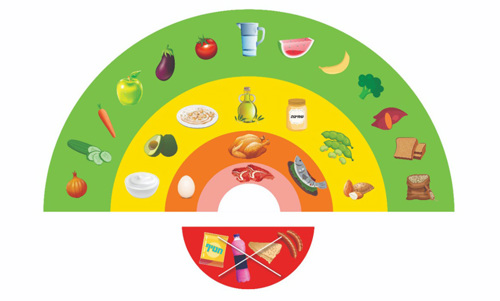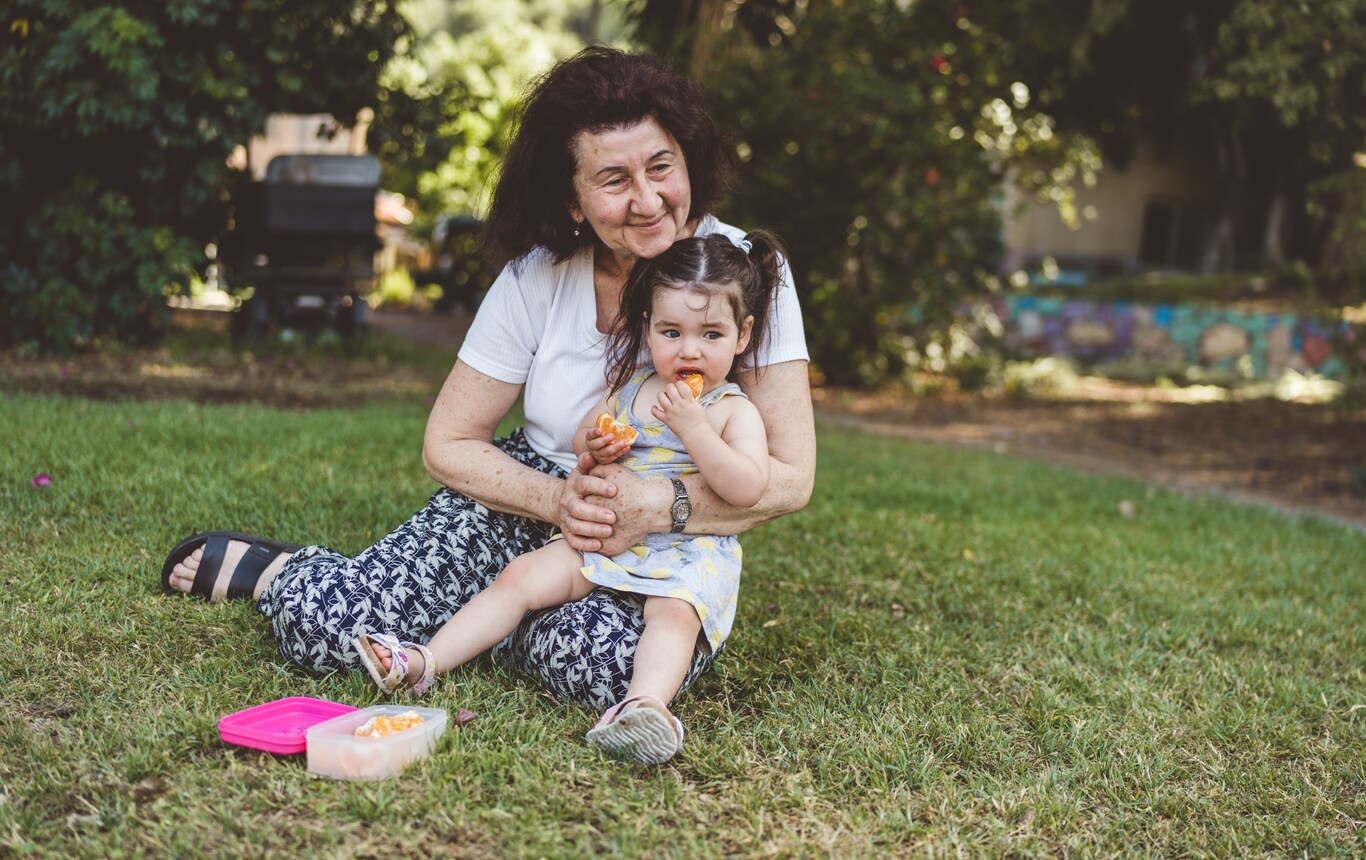Dietary Guidelines for Children and Teenagers
A healthy balanced diet is important at any age and throughout life, but particularly during childhood and adolescence, where the growth rate is faster. Healthy food supports the growth and development of the body and brain. A diverse and balanced family menu that is based on the nutritional rainbow diet will ensure optimal supply of the ingredients your child requires for normal growth and development, and maintain the health of all family members.
Recommendations for a healthy diet
The recommended daily diet is based on a main group of foods and on the recommended daily allowance for each – something that is referred to as the "nutritional rainbow diet". Exposure to healthy food and the acquisition of healthy eating habits from an early age will help establish a healthy routine and proper eating habits now and for the future.
Acquiring healthy dietary habits and lifestyle
The keys to successfully acquiring healthy dietary habits are persistence and gradualness. Children should be exposed to a variety of healthy foods from an early age. They should become familiar with them and gradually eat them. We compiled several recommendations to help you establish a healthy routine at home while introducing your children to nutritious and various foods.
- Family meals: family meals should be eaten at the dining room table, not in front of the television or computer.
- Food variety: provide a variety of food to the extent possible and include fruit or vegetables in every meal.
- Role model: try to be a role model during meals, by eating healthy food and maintaining an active healthy lifestyle.
- Involvement: involve children in menu planning, cooking and setting the table.
- Diverse cooking: cook using various methods such as steaming, roasting, boiling and baking. Limit the amount of frying.
- Fast food: try to minimize the amount of fast food, snacks and candy eaten. Make sure that healthy food is easily accessible to children.
- Sweetened beverages: minimize the consumption of beverage sweetened by sugar and sugar substitutes.
- Avoid arguments over food: once you serve food to the table, allow children to decide what and how much they eat.
- Positive reinforcement: avoid using food as an award for good behavior. Express excitement and satisfaction in other ways, such as a compliment, hug, and so on.

The nutritional rainbow diet
Emphases for a health diet for children
- To prevent anemia: it is important to eat food rich in iron such as legumes, meat, fish, nuts, seeds, and more.
- To prevent diseases: research established a link between excess intake of sodium (salt), saturated fat, sugar and ultra-processed food and diseases. The recommendation is to eat fresh fruit and vegetables and raw food every day while limiting use of salt. Other studies found that most of the salt we eat comes from processed food and not necessarily the saltshaker. Avoid products marked with the red label indicating high levels of sodium, saturated fat and sugar.
- Calcium intake: food rich in calcium should be consumed to protect bones and teeth, such as dairy products, tofu, sardines, cabbage, broccoli and white beans.
- Water: children should be given a bottle of water to drink in school. Make sure to drink water throughout the day, even when it is cold, and when you are not thirsty.
- Regular meals: eat 3 main meals a day (breakfast, lunch and dinner). If you are hungry, eat light snacks in between.
Note
Note
It is important that you notice the red and green labels on product packages. Teach your children the signs and their meaning: high levels of sugar, sodium and saturated fat. Involve them in the food shopping, in the preparation of family meals and in making sandwiches for preschool and school. For more information about the red and green labels, visit the Efsharibari website
Healthy diet in preschool and school
Just before the 10:00 meal, let’s discuss breakfast at home – a light meal before leaving for preschool and school, reenergizes the body and brain after a ‘night fast’, when you are asleep. It improves the ability to focus and study. Studies found that pupils who arrived at school after having eaten breakfast at home were more focused and achieved better results in school.
The lunchbox
Healthy sandwiches and healthy food improve children’s attention and academic achievements at school, help prevent disease and teach correct dietary habits. Breakfast in school is tremendously important. Children are introduced to different and various foods, in their own lunchbox and to those of other children. The social dimension enters the picture and affects their willingness to taste and try new food.
The lunchbox should contain a variety of food that is rich in dietary values. Dietary fiber, for example, in the whole grain bread in the sandwich, proteins and healthy fat from the avocado, homemade hummus spread, tahina, egg, lentil omelet, white cheese, tofu or tuna, alongside fruits and vegetables.
Did the lunchbox come back full? This happens to the best of us. Take the opportunity to sit with the children to learn what they like and what they do not like, what they want to receive in the lunchbox and explain the limitations. Do not stop providing fruits and vegetables in the lunchbox. Keep exposing them and you may be pleasantly surprised.
What about some “energy”
Let’s talk about energy snacks, those snacks that are marketed to us as healthy food with colorful packages and nutritious-sounding names. They may occasionally actually contain healthy ingredients such as whole grains, nuts and dried fruit but they largely fall under the category of ‘ultra processed’, and contain large amounts of sugar, sodium and saturated fat. It is important that we check - what is the purpose of eating an energy snack? If it is a light, quick substitute for a snack, the answer will be – you probably should not eat it.
So, what should you do? Prepare healthy, light and inexpensive alternatives for snacks, such as fruit yogurt or fruit and several nuts or almonds. Even homemade energy snacks that you can have enjoy preparing and then store in the freezer.
Recommended recipe for healthy, nutritious energy balls, on Efsharibari website
Vegetarian and vegan diet
If your child follows a vegetarian or vegan diet, it is particularly important to make sure he or she eats enough of the essential nutritional values, such as B12, zinc and iron.
A balanced and varied vegetarian diet can supply all the nutritional needs at any age. During adolescence, with the rapid growth and development, a diet that contains foods from all food groups, vitamins and minerals is even more important. Meals should include legumes, healthy fats such as tahina, nuts and avocado, vegetables and whole grains.
For a vegan diet, which does not include animal-based food, it is important that the diet includes good sources of protein and energy such as legumes, grains (ideally whole grain), seeds and nuts. If necessary, incorporate food supplements, once you have consulted a dietitian or nutritionist.
For more about infant diet in families adopting a vegetarian and vegan diet

















